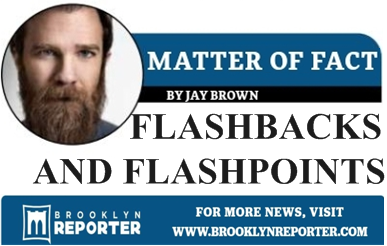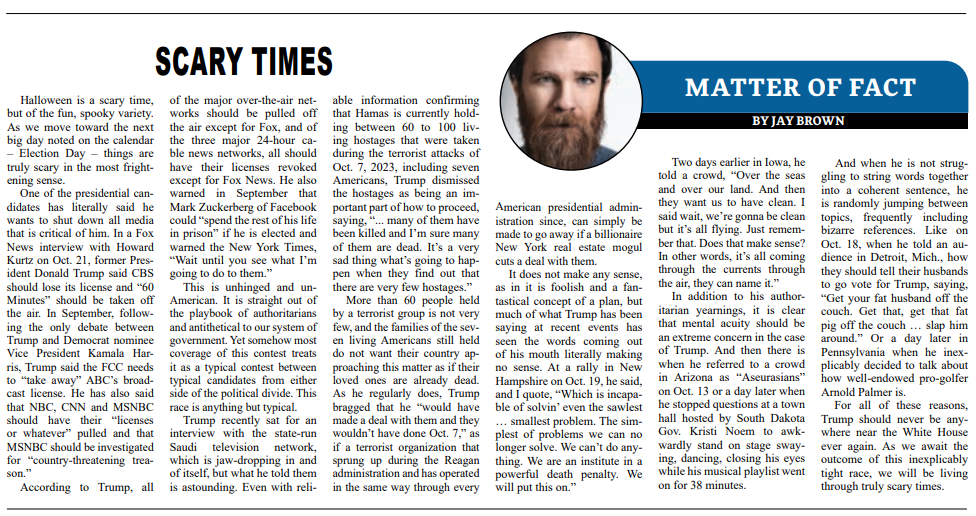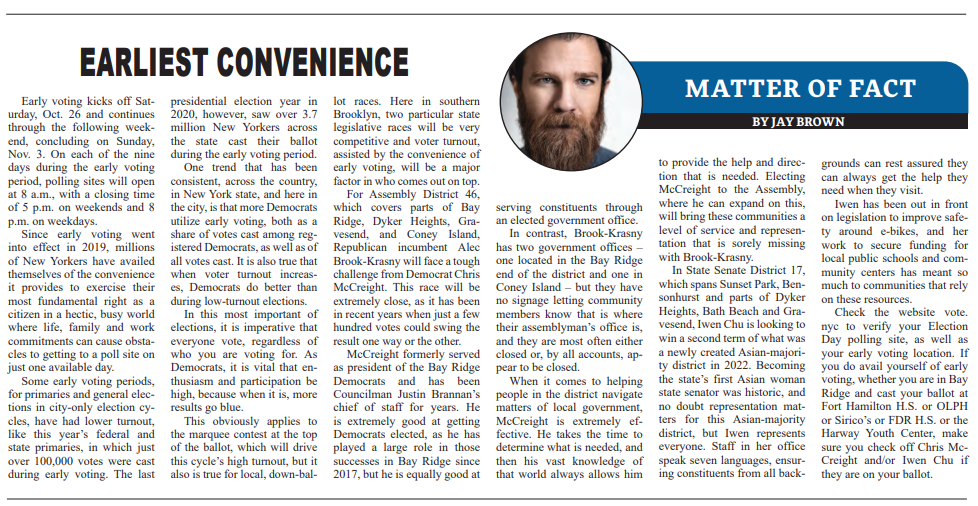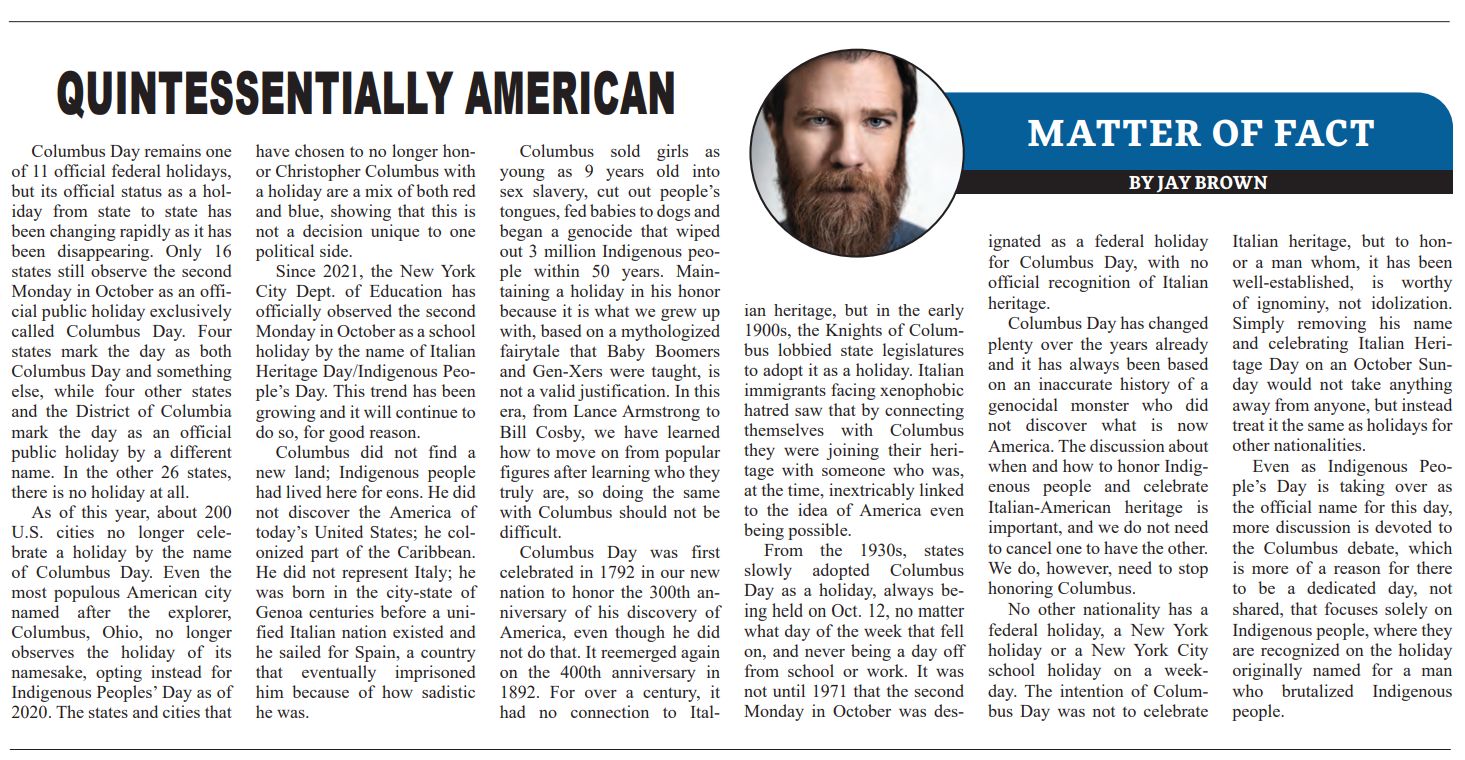This column, from the weekly opinion piece MATTER OF FACT, first appeared on BrooklynReporter.com, the Home Reporter and Spectator dated July 17, 2020
My family and I heard a commotion outside and came out from our backyard to see what was happening. We realized that protesters had come to the neighborhood in response to the racist murder an innocent African American.
A crowd had already gathered to check out the scene. Many shouted angrily at the protesters. A few stood atop a car, hurling racial epithets, and taunting them with watermelons.
It was August 26, 1989 and I was five days from my thirteenth birthday. I was aware of what racism was and that it existed in my community, but the sights and sounds of that day, as well as from the subsequent protests where black and brown people were berated by local bigots, has never left me. They are as vivid now as the day I witnessed them 31 years ago.

However that affected me as a 13-year-old white kid from Bensonhurst, it is inconsequential in comparison to how it affected the people of color who were there to speak for a murdered 16-year-old or to how it forever changed the life of Diane Hawkins, whose boy was stolen from her.
Three nights earlier, her son Yusuf Hawkins had been murdered a few blocks from my home. The mistake he had made, had been taking the N train to Bensonhurst with a few friends to look at a used car they had seen a classified ad for. Dozens of local teens had shouted racial slurs at them and chased them with weapons. It culminated in Yusuf lying dead near the corner of 20th Avenue and Bay Ridge Avenue with two bullets in his chest.
These images from three decades ago came flooding back to me after seeing video from an event this past Saturday, July 11, on 13th Avenue. Local Black Lives Matter counter-protesters had come to Dyker Heights where a rally to support the NYPD was beginning.
Although the counter-protesters were a relatively small group that were on the sidewalk and off of the march route, they were immediately assailed with vitriol. Women were told that they “need to be raped” by people yelling, “Black lives don’t matter. That’s garbage.”
“The murders of Yusuf and Manuel may be a few decades old, but the mentality that created the environment where that could happen was one where people felt it was acceptable to say, “Black lives don’t matter. That’s garbage!””
To see the same raging hatred I recall from my childhood was disturbing and sickening. I knew that vestiges of it remained in Southern Brooklyn, but I was shocked to see it on full display, in broad daylight in 2020.
In 1994, five years after the murder of Yusuf Hawkins, again, a group of local, white teens with weapons went looking for people that “don’t belong here.” This time, they entered Dyker Beach Park, a short distance from the high school I had recently graduated from. This time, the target was Latino immigrants. This time, nobody had a gun. This time, they beat 40-year-old Ecuadorean immigrant, Manuel Aucaquizhpi to death with lead pipes, metal chair legs and two-by-fours, leaving his brain exposed.
I love the neighborhood I have called home my entire life. I hate that it has always had this connection to racism. The murders of Yusuf and Manuel may be a few decades old, but the mentality that created the environment where that could happen was one where people felt it was acceptable to say, “Black lives don’t matter. That’s garbage!”

The rally on July 11, where that was shouted out loud amongst a crowd of people, was billed as a Support-The-Police event. Being that it was organized by Republican and Conservative organizations, leaders and candidates, and that it was full of Trump-Pence flags, it was clear that it was more of a political campaign event, intended to stoke division in the very way the president has.
In 2016, two men in Boston were arrested for beating a Mexican immigrant. One of them told police, “Donald Trump was right. All these illegals need to be deported.” When then-candidate Trump was asked whether he condoned the reasoning given for that crime, he replied, “The people that are following me are very passionate. They love this country. They want this country to be great again.”
The way we should be showing we love our country is to be very passionate about making sure nobody’s life does not matter.




